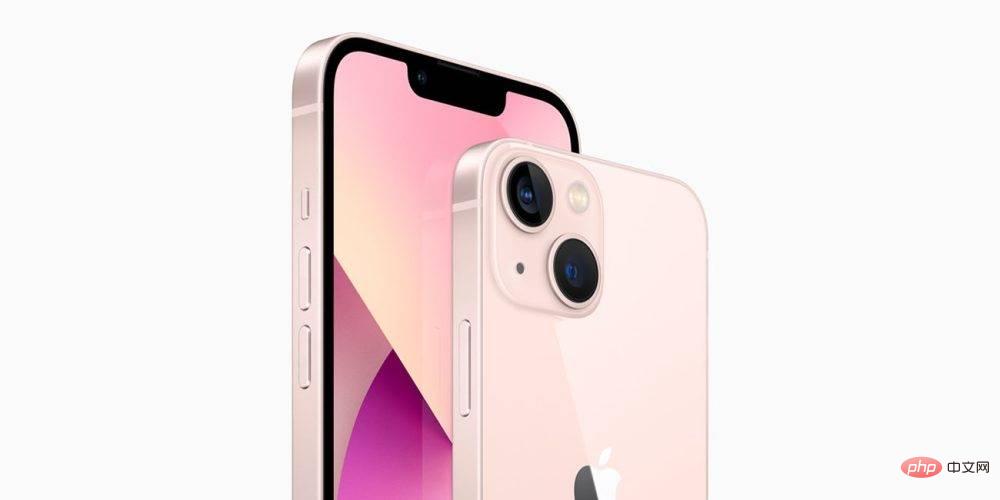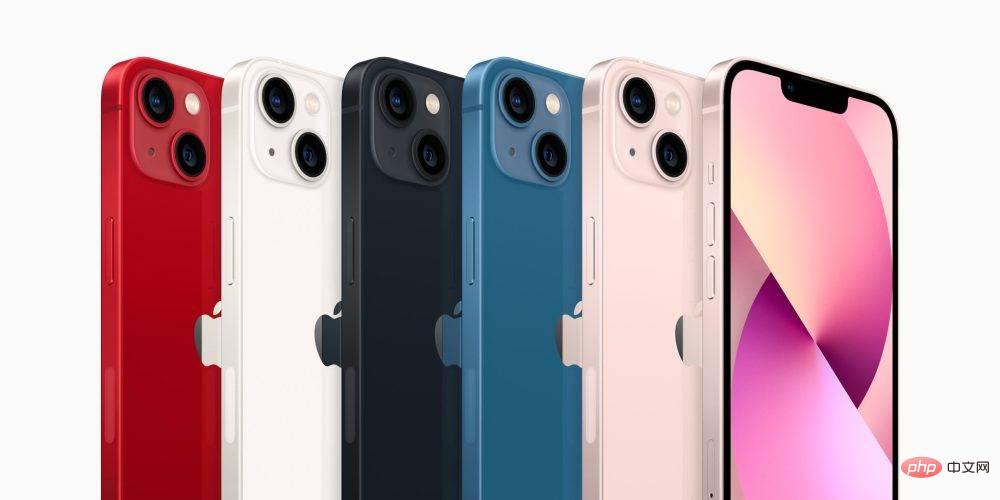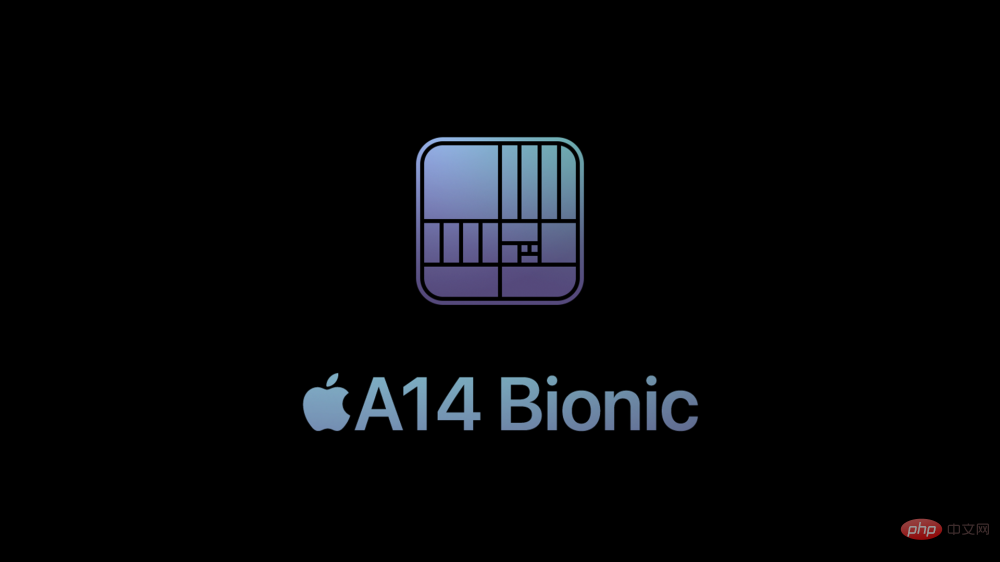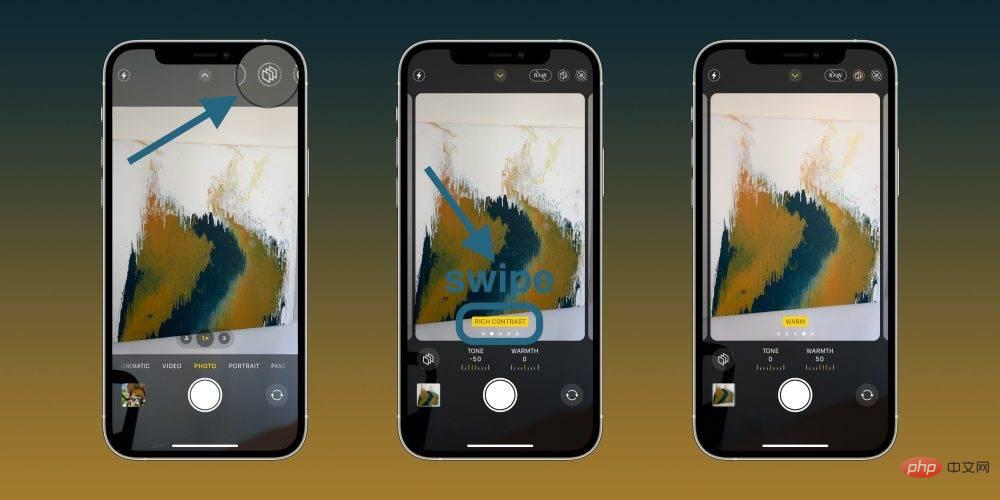iPhone 12 vs. iPhone 13: Which one should you buy in 2022?
iPhone 12 vs. iPhone 13: Display
iPhone 12 and iPhone 13 both feature a 6.1-inch Super Retina XDR display with OLED technology and a resolution of 2532 x 1770. This equates to 460 pixels per inch. One upgrade on the iPhone 13, however, is a display with a maximum brightness of 800 nits, up from the iPhone 12's 625 nits. The actual maximum brightness of the display is the same, at 1,200 nits, thanks to general HDR support.

Please note that unlike the iPhone 13 Pro and iPhone 13 Pro Max, neither the iPhone 12 nor the iPhone 13 comes with a ProMotion display. Instead, you get a 60Hz refresh rate.
Additional display features for iPhone 13 and iPhone 13 Pro include:
- 2,000,000:1 contrast ratio
- Audio display
- Wide color gamut (P3 )
- Haptic touch
- HDR display
Design
The iPhone 12 and iPhone 13 are very similar in design. Both devices have similar flat edges to the iPad Pro, have nearly bezel-less displays and support Face ID. On the back, you'll find a glossy finish in the color of your choice.
Speaking of Face ID, the notch housing the Face ID sensor on the iPhone 13 is slightly smaller than the iPhone 12. Apple says the iPhone 13 notch is about 20% smaller in width, but also slightly taller. In practice, this is a very minor change, and Apple hasn't made any changes to the iOS experience to take advantage of the slight increase in available screen real estate.

The iPhone 13 is thicker and heavier than the iPhone 12 to accommodate the larger battery (more on that later).
iPhone 12 Dimensions:
- Height: 5.78 inches (146.7 mm)
- Width: 2.82 inches (71.5 mm)
- Depth: 0.29 inches (7.4 mm)
- Weight: 5.78 oz (164 g)
iPhone 13 Dimensions:
- Height: 5.78 inches (146.7 mm)
- Width: 2.82 inches (71.5 mm)
- Depth: 0.30 inches (7.65 mm)
- Weight: 6.14 oz ( 174g)
The iPhone 12 and iPhone 13 are made from what Apple calls "aerospace-grade aluminum" and have a ceramic shield on the front to protect the display. Both phones are water resistant to a depth of 6 meters for up to 30 minutes.
Performance

iPhone 12 is powered by Apple’s A14 Bionic processor, while iPhone 13 is powered by the latest and most powerful A15 Bionic chip. Both devices come with 4GB of RAM inside.
Both the A14 Bionic and A15 Bionic chips feature 6-core CPUs with 2 performance cores and 4 efficiency cores. Both also feature a 4-core GPU and a 16-core Neural Engine. Apple has been mum on how much faster the A15 Bionic is compared to the A14 Bionic, but GeekBench results show a slight improvement in CPU performance year-over-year.
Battery Life
However, where the A15 Bionic really surpasses the A14 Bionic is in battery life and efficiency. Apple says the iPhone 13 lasts 2.5 hours longer than the iPhone 12, an improvement made possible by the efficiency and larger battery of the A15 Bionic — hence the increased weight and thickness this year.
Here are Apple’s complete battery stats for the iPhone 12 and iPhone 13.
iPhone 12:
- Video playback: up to 17 hours
- Video playback (streaming): up to 11 hours
- Audio playback: up to 65 hours
iPhone 13:
- Video playback: up to 19 hours
- Video playback (streaming): up to 15 hours
- Audio playback: up to 75 hours
Both iPhone 12 and iPhone 13 support fast charging, up to 30 minutes 50% rechargeable.
Connectivity
If you want 5G connectivity, both the iPhone 12 and iPhone 13 have you covered. Apple says this helps with "ultra-fast downloads and high-quality streaming." This includes support for mmWave 5G connectivity in the US, as well as support for sub-6GHz 5G in the US and other countries.
Both the iPhone 12 and iPhone 13 include a Lightning connector on the bottom and support MagSafe connections on the back. When using the MagSafe wireless charger, it also supports 7.5W Qi wireless charging and 15W wireless charging.

The iPhone 12 and iPhone 13 feature dual 12MP camera systems with wide-angle and ultra-wide-angle cameras on the back. On the front, you'll find a 12MP f/2.2 aperture selfie camera.
Here are the full specs for iPhone 12 and iPhone 13 shared features:
- Dual 12MP camera system: Ultra-wide and wide-angle cameras
- Ultra-wide: ƒ/2.4 aperture and 120° field of view
- Wide-angle: ƒ/1.6 aperture
- 2x optical zoom
- Up to 5x digital zoom
- Portrait mode with advanced bokeh and depth control
- Portrait lighting with six effects (Natural, Work Room, silhouette, stage, stage mono, high-profile mono)
- Five-element lens (super wide angle); Seven-element lens (wide angle)
- Updates with slow sync Bright True Tone Flash
- Panorama (up to 63MP)
- Sapphire Crystal Lens Cover
- 100% Focus Pixels (Wide)
- Night Mode (Ultra Wide , wide)
- Deep Fusion (ultra wide, wide)
- Smart HDR 3 with scene detection
- Wide color gamut capture for photos and live photos
- Lens Correction (Ultra Wide Angle)
- Advanced Red Eye Correction
- Auto Image Stabilization
- Burst Mode
- Photo Geotagging
- Captured image formats: HEIF and JPEG
- Record 4K video at 24 fps, 25 fps, 30 fps or 60 fps
- Record 1080p HD video at 25 fps, 30 fps or 60 fps
iPhone 13 has several features that iPhone 12 does not:
- Record HDR video up to 4K at 60 fps with Dolby Vision technology
- On iPhone Limited to 30 fps on e12
- Sensor-shift optical image stabilization
- Photography Styles for personalizing the look of images
- Movie mode for recording shallow depth of field video
Colors, Storage and Pricing
The iPhone 13 is available in five different colors: Midnight, Starlight, Blue, Red, and Pink. The iPhone 12 is available in six colors: black, white, red, green, blue and purple.
In terms of pricing, the iPhone 13 will retail for:
- $799 for 128GB of storage
- $899 for 256GB of storage
- 512GB of storage $1,099
Meanwhile, Apple is selling the iPhone 12 today for:
- 64GB storage $699
- 128GB storage $749
- 256GB Storage $849
The above is the detailed content of iPhone 12 vs. iPhone 13: Which one should you buy in 2022?. For more information, please follow other related articles on the PHP Chinese website!

Hot AI Tools

Undresser.AI Undress
AI-powered app for creating realistic nude photos

AI Clothes Remover
Online AI tool for removing clothes from photos.

Undress AI Tool
Undress images for free

Clothoff.io
AI clothes remover

Video Face Swap
Swap faces in any video effortlessly with our completely free AI face swap tool!

Hot Article

Hot Tools

Notepad++7.3.1
Easy-to-use and free code editor

SublimeText3 Chinese version
Chinese version, very easy to use

Zend Studio 13.0.1
Powerful PHP integrated development environment

Dreamweaver CS6
Visual web development tools

SublimeText3 Mac version
God-level code editing software (SublimeText3)

Hot Topics
 1386
1386
 52
52
 deepseek ios version download and installation tutorial
Feb 19, 2025 pm 04:00 PM
deepseek ios version download and installation tutorial
Feb 19, 2025 pm 04:00 PM
DeepSeek Smart AI Tool Download and Installation Guide (Apple Users) DeepSeek is a powerful AI tool. This article will guide Apple users how to download and install it. 1. Download and install steps: Open the AppStore app store and enter "DeepSeek" in the search bar. Carefully check the application name and developer information to ensure the correct version is downloaded. Click the "Get" button on the application details page. The first download may require AppleID password verification. After the download is completed, you can open it directly. 2. Registration process: Find the login/registration portal in the DeepSeek application. It is recommended to register with a mobile phone number. Enter your mobile phone number and receive the verification code. Check the user agreement,
 Why can't the Bybit exchange link be directly downloaded and installed?
Feb 21, 2025 pm 10:57 PM
Why can't the Bybit exchange link be directly downloaded and installed?
Feb 21, 2025 pm 10:57 PM
Why can’t the Bybit exchange link be directly downloaded and installed? Bybit is a cryptocurrency exchange that provides trading services to users. The exchange's mobile apps cannot be downloaded directly through AppStore or GooglePlay for the following reasons: 1. App Store policy restricts Apple and Google from having strict requirements on the types of applications allowed in the app store. Cryptocurrency exchange applications often do not meet these requirements because they involve financial services and require specific regulations and security standards. 2. Laws and regulations Compliance In many countries, activities related to cryptocurrency transactions are regulated or restricted. To comply with these regulations, Bybit Application can only be used through official websites or other authorized channels
 Anbi app official download v2.96.2 latest version installation Anbi official Android version
Mar 04, 2025 pm 01:06 PM
Anbi app official download v2.96.2 latest version installation Anbi official Android version
Mar 04, 2025 pm 01:06 PM
Binance App official installation steps: Android needs to visit the official website to find the download link, choose the Android version to download and install; iOS search for "Binance" on the App Store. All should pay attention to the agreement through official channels.
 Sesame Open Door Trading Platform Download Mobile Version Gateio Trading Platform Download Address
Feb 28, 2025 am 10:51 AM
Sesame Open Door Trading Platform Download Mobile Version Gateio Trading Platform Download Address
Feb 28, 2025 am 10:51 AM
It is crucial to choose a formal channel to download the app and ensure the safety of your account.
 How to solve the problem of 'Undefined array key 'sign'' error when calling Alipay EasySDK using PHP?
Mar 31, 2025 pm 11:51 PM
How to solve the problem of 'Undefined array key 'sign'' error when calling Alipay EasySDK using PHP?
Mar 31, 2025 pm 11:51 PM
Problem Description When calling Alipay EasySDK using PHP, after filling in the parameters according to the official code, an error message was reported during operation: "Undefined...
 Binance binance official website latest version login portal
Feb 21, 2025 pm 05:42 PM
Binance binance official website latest version login portal
Feb 21, 2025 pm 05:42 PM
To access the latest version of Binance website login portal, just follow these simple steps. Go to the official website and click the "Login" button in the upper right corner. Select your existing login method. If you are a new user, please "Register". Enter your registered mobile number or email and password and complete authentication (such as mobile verification code or Google Authenticator). After successful verification, you can access the latest version of Binance official website login portal.
 Download link of Ouyi iOS version installation package
Feb 21, 2025 pm 07:42 PM
Download link of Ouyi iOS version installation package
Feb 21, 2025 pm 07:42 PM
Ouyi is a world-leading cryptocurrency exchange with its official iOS app that provides users with a convenient and secure digital asset management experience. Users can download the Ouyi iOS version installation package for free through the download link provided in this article, and enjoy the following main functions: Convenient trading platform: Users can easily buy and sell hundreds of cryptocurrencies on the Ouyi iOS app, including Bitcoin and Ethereum. and Dogecoin. Safe and reliable storage: Ouyi adopts advanced security technology to provide users with safe and reliable digital asset storage. 2FA, biometric authentication and other security measures ensure that user assets are not infringed. Real-time market data: Ouyi iOS app provides real-time market data and charts, allowing users to grasp encryption at any time
 Sesame Open Door Exchange App Official Download Sesame Open Door Exchange Official Download
Mar 04, 2025 pm 11:54 PM
Sesame Open Door Exchange App Official Download Sesame Open Door Exchange Official Download
Mar 04, 2025 pm 11:54 PM
The official download steps of the Sesame Open Exchange app cover the Android and iOS system download process, as well as common problems solutions, helping you download safely and quickly and enable convenient transactions of cryptocurrencies.



